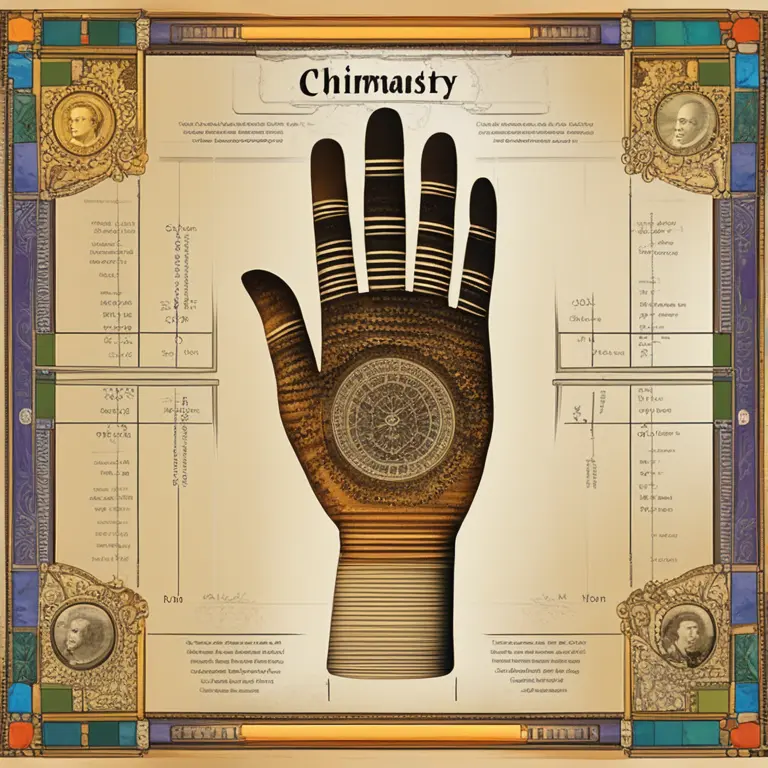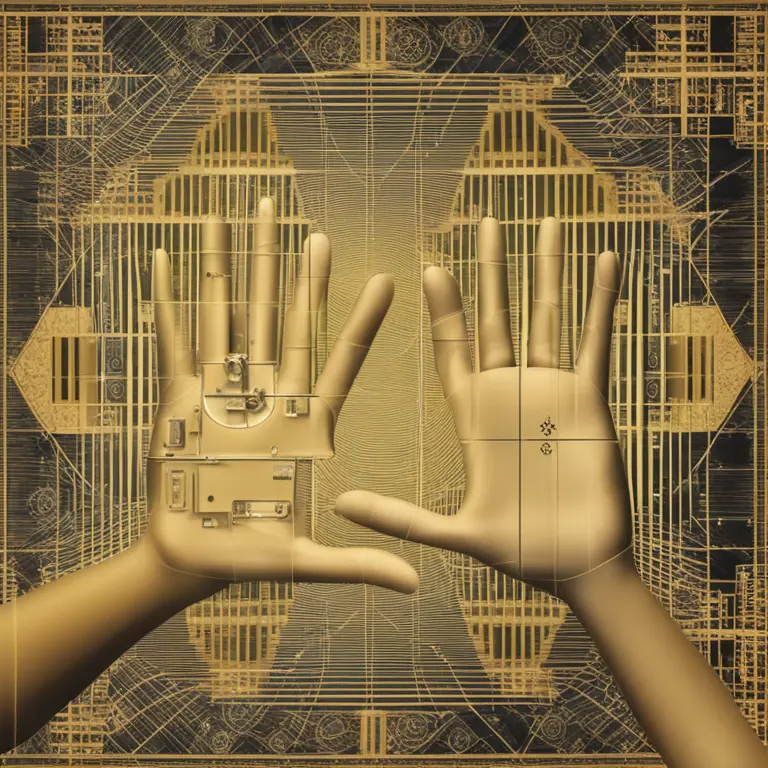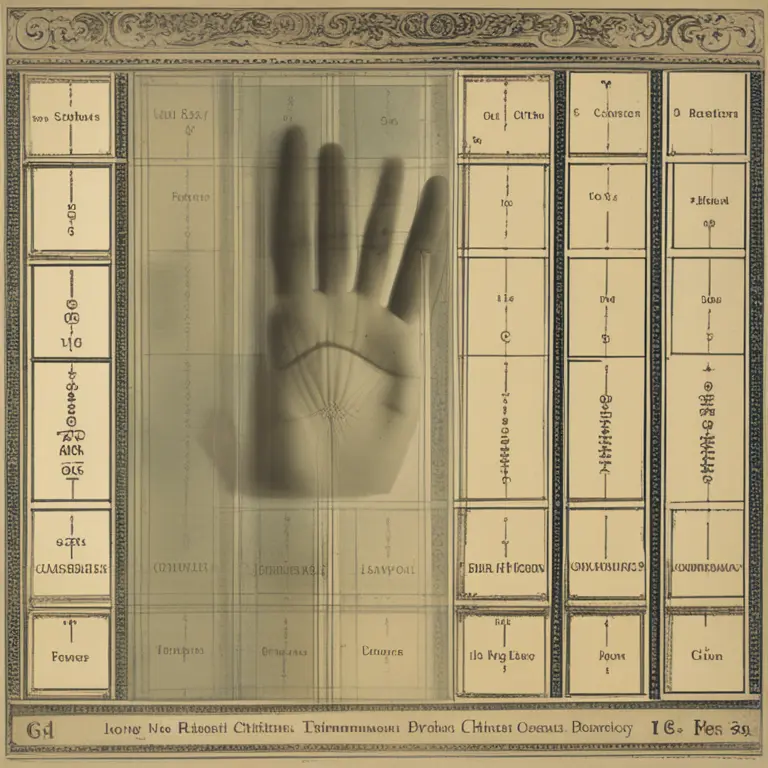
Palmistry and Chiromancy: A Comparative Insight
Discover the subtle differences and historical overlaps between palmistry and chiromancy in our comprehensive comparison article.
article by Nora Pennington
Palmistry and Chiromancy Defined
The ancient practices of palmistry and chiromancy often intertwine in the public mind, fostering a perception that they are merely distinct terms for the same art. However, subtle distinctions define each practice. Palmistry, broadly known in the realm of divination, is the study of the palm to analyze one's personality and predict future events. Meanwhile, chiromancy focuses intently on the patterns and lines etched into the palm, and is, in strict terms, a subset of palmistry that dedicates itself to the interpretation of these lines as life's roadmap.

The History and Evolution
Historically, both palmistry and chiromancy share roots that stretch back to ancient civilizations. Intriguingly, evidence of palm reading can be found in Vedic scripts, Chinese I Ching, and ancient Greek mythology. The art has evolved differently across cultures, progressing in tandem with society's understanding of psychology and spirituality. In contemporary terms, palmistry encompasses chiromancy; yet chiromancy shakes off broader palm interpretations, pinpointing the creases and mounts that tell a story written in skin and fate.

The Lines of Distinction
Chiromancy narrows its gaze to specific lines — the heart, head, life, and fate lines — and often includes the analysis of other major and minor lines that crisscross the palms. It speaks to a person's love life, intellect, vitality, and destiny. Palmistry, on the other hand, might combine this analysis with the examination of finger shapes, fingernails, skin patterns, and even the color and texture of the skin, providing a more holistic view of an individual's experiences and potentials.

Techniques and Tools
The methods used in palmistry and chiromancy have seen expansion and refinement over the years. Modern practitioners often employ high-resolution imaging and software analytics to complement traditional techniques. Furthermore, with burgeoning interest in neuroscientific correlations and psychological profiling, contemporary palmists seek an empirical edge in a field steeped in mysticism, while chiromancers maintain a purist approach to interpreting the naked lines, relying on meticulous scrutiny and intuitive leaps.

Interpreting Palmistry and Chiromancy Today
In the modern fascination with spirituality and self-discovery, both palmistry and chiromancy experience a renaissance. While palmistry appeals to those seeking a comprehensive read, chiromancy attracts individuals interested in a targeted approach to life's pathways. New-age practitioners often integrate these disciplines with counseling and therapeutic modalities, providing a personal development service beyond mere fortune-telling.
Cultural and Ethical Considerations
Although palmistry and chiromancy are embraced worldwide, cultural sensitivities around divination persist. Ethical practitioners are advised to approach readings with respect and without making overreaching claims. The inherent personal nature of a palm reading demands a responsible and non-dogmatic approach, recognizing the practice as a personal belief system rather than a universally accepted truth.
Published: 1/29/2024
Modified: 1/29/2024
More predictions
Come back here soon to learn more about yourself and your future


Palmistry: The Significance of Vertical Lines
Discover the meaning behind the vertical lines on your fingers with our insightful palmistry guide, revealing aspects of your character and destiny.


The Mystery of the Palmistry Health Line
Decode the mysteries of your vitality through the intricate details of the palmistry health line.


The Secrets Hidden in Your Palm's Health Line
Discover the significance of the health line in palmistry and how it may offer insights into your well-being and vitality.